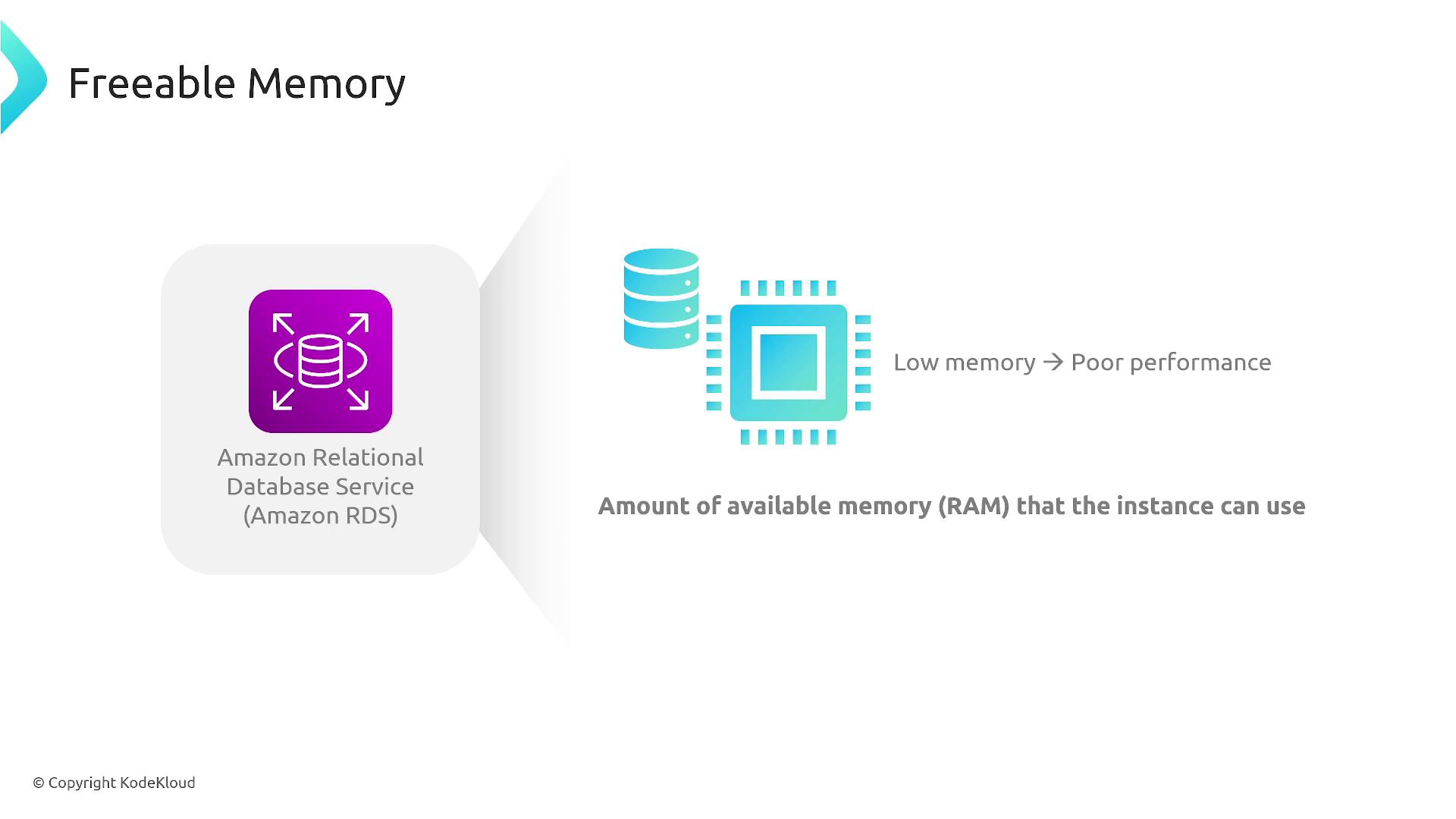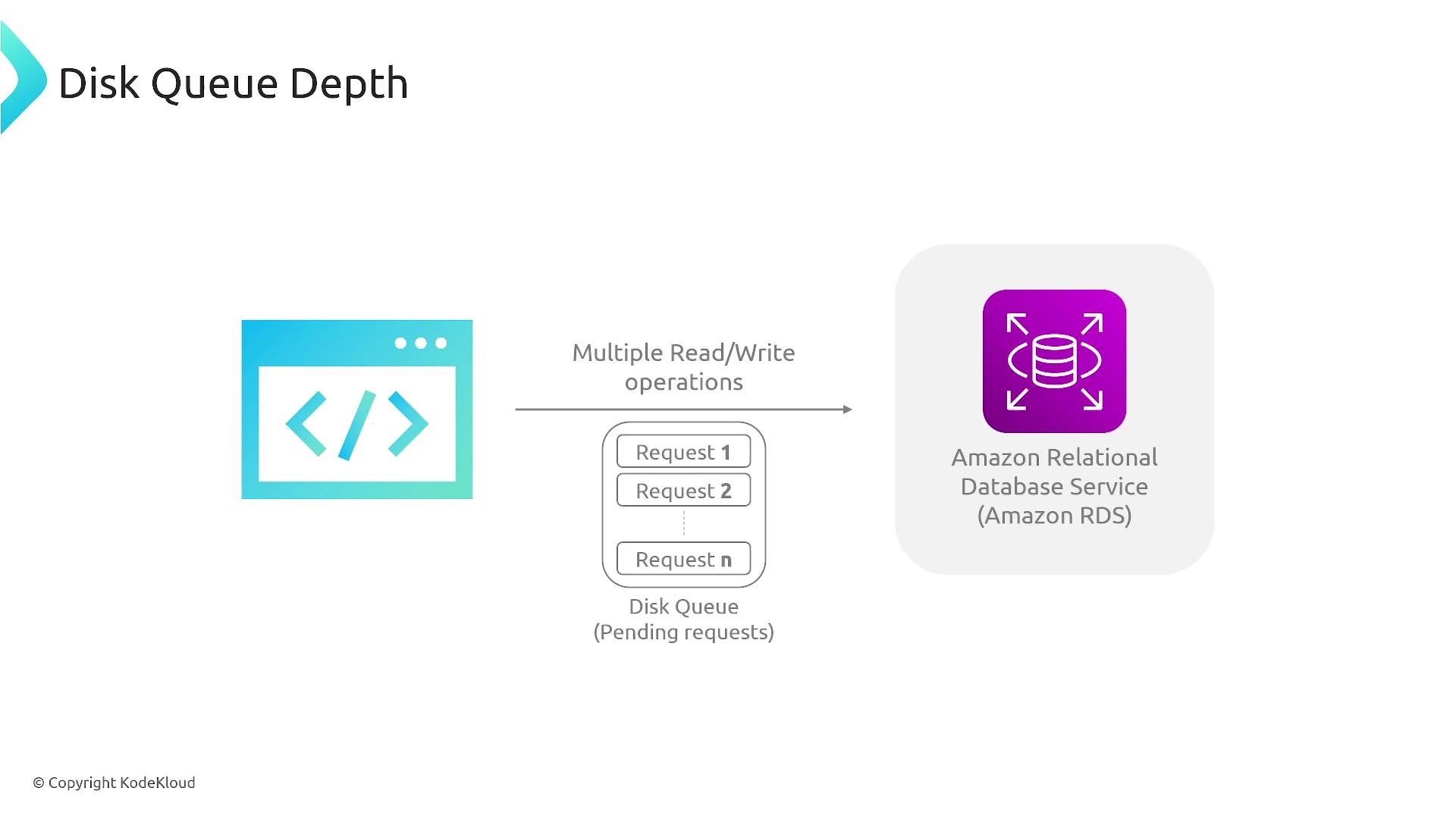AWS Certified SysOps Administrator - Associate
Domain 6 Cost and Performance Optimization
Monitoring RDS Metrics for database performance optimization
Welcome students! In this article, we explore essential Amazon RDS metrics that play a crucial role in optimizing your database performance. Monitoring these metrics will help you identify potential issues and make informed scaling decisions.
CPU Utilization
Monitoring CPU utilization is critical. A consistently high CPU usage may indicate that your database instance is under heavy load. Depending on your configuration, you can:
- Reboot or vertically scale a standard RDS instance.
- Add read replicas for Aurora or read-heavy workloads to distribute the load more effectively.
Tip
Regularly review CPU metrics to proactively address performance bottlenecks before they impact your application's availability.
Database Connections
Keeping track of the number of open database connections via Amazon CloudWatch helps you detect potential issues such as connection leaks or too many simultaneous connection attempts. One effective way to address this is by using RDS Proxy, which establishes a fixed number of connections to your RDS database and efficiently handles new connection requests.

Best Practice
Implement RDS Proxy to prevent connection overload and ensure smoother application performance.
Freeable Memory
Freeable memory represents the available RAM on your database instance. Insufficient memory can lead to performance degradation. Consider the following strategies to manage freeable memory:
- Upsize your instance if memory consumption is high due to write-heavy operations.
- Offload specific indexes or operations to a read replica in environments with predominantly read-heavy workloads.

I/O Performance
Evaluating I/O performance is essential for maintaining a responsive database. Key I/O metrics include:
- Number of read and write operations
- Write IOPS
- Read and write latency
For workloads that are mostly read-oriented, adding a read replica can significantly reduce read latency. If high write latency is observed, consider upgrading to a higher-performance disk.
Additionally, monitor the disk queue depth, which indicates how many read and write operations are waiting to be processed. A high disk queue depth may signal that the disk is overloaded and that you might need to:
- Upgrade your disk performance
- Provision additional IOPS

Performance Alert
A consistently high disk queue depth can lead to severe performance bottlenecks. It's important to address disk I/O limitations before they affect critical operations.
Conclusion
By monitoring these key metrics—CPU utilization, database connections, freeable memory, I/O performance, and disk queue depth—you can optimize your RDS instance for peak performance. Regularly analyzing these metrics enables you to make informed decisions about scaling, instance upgrades, and performance tuning, ensuring your database remains robust and efficient under varying workloads.
For further reading on managing and scaling your database performance on Amazon RDS, check out related resources in the Amazon RDS Documentation.
Watch Video
Watch video content